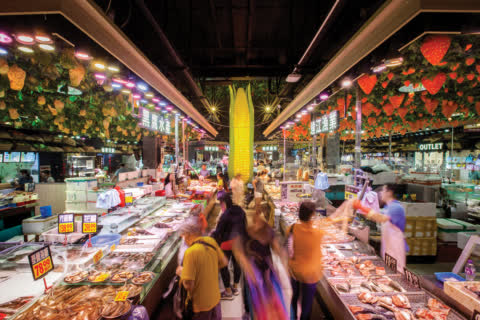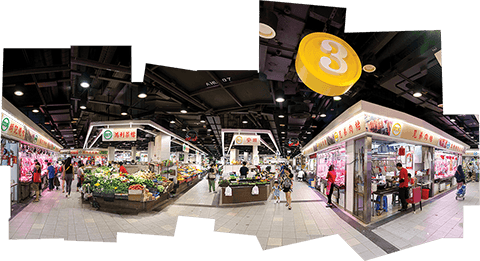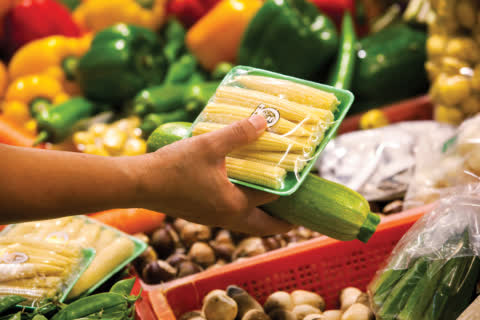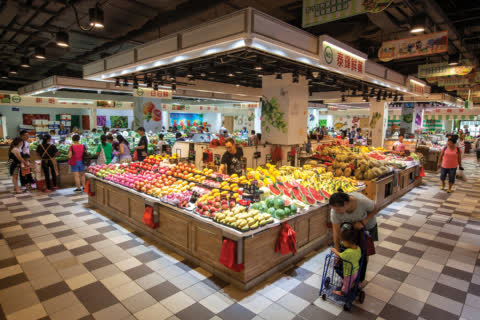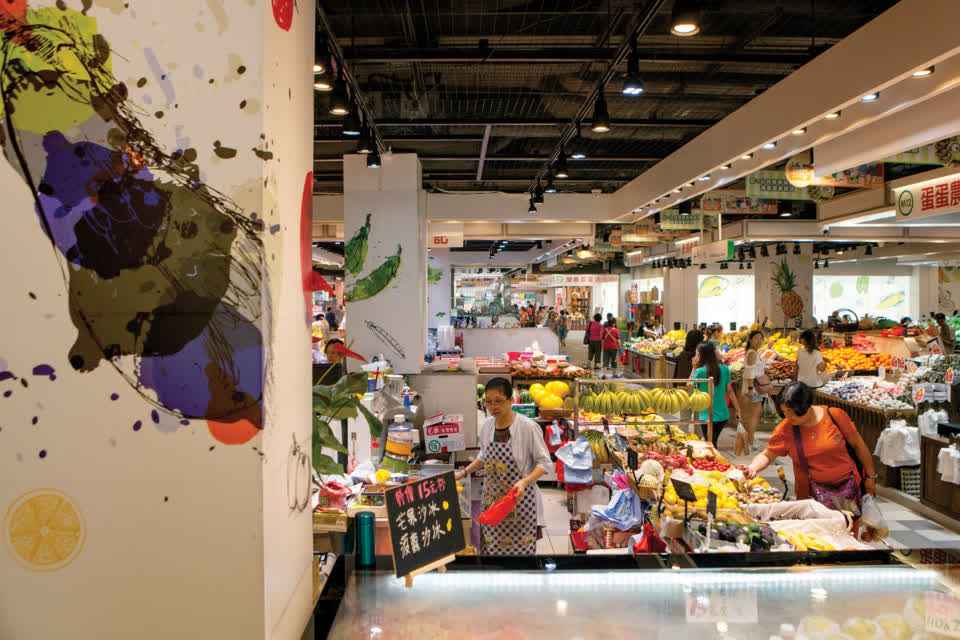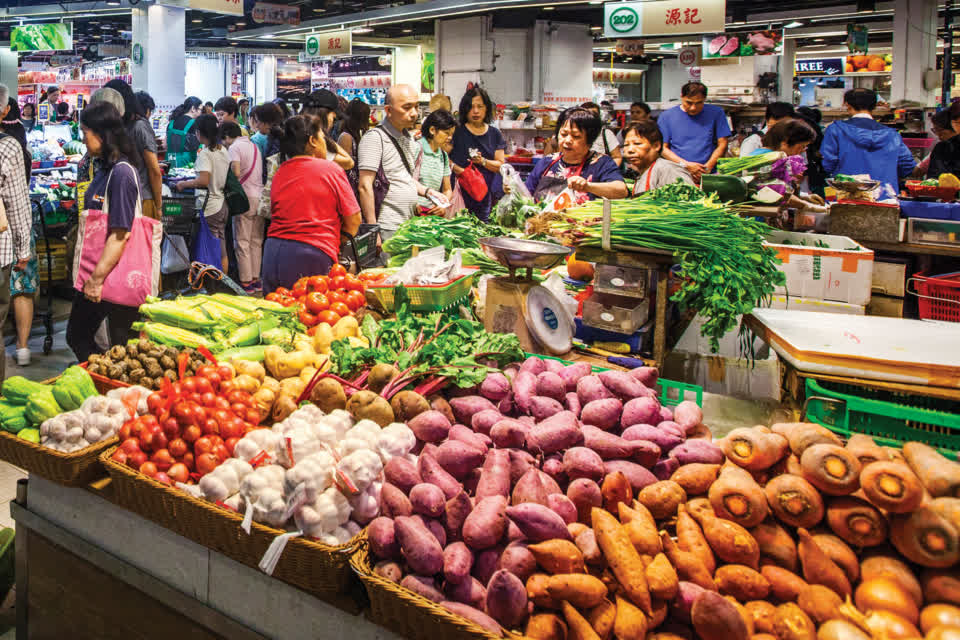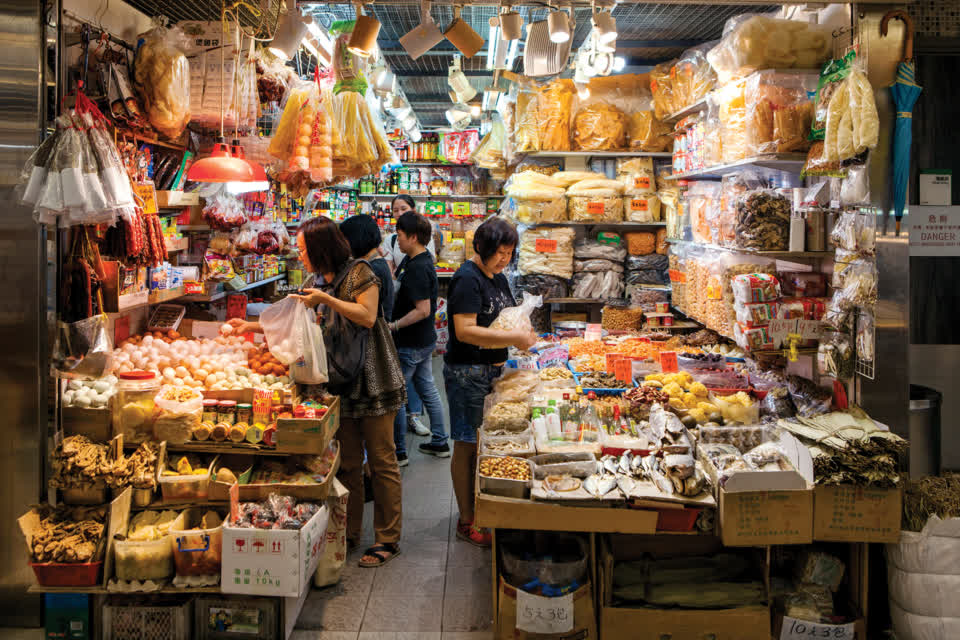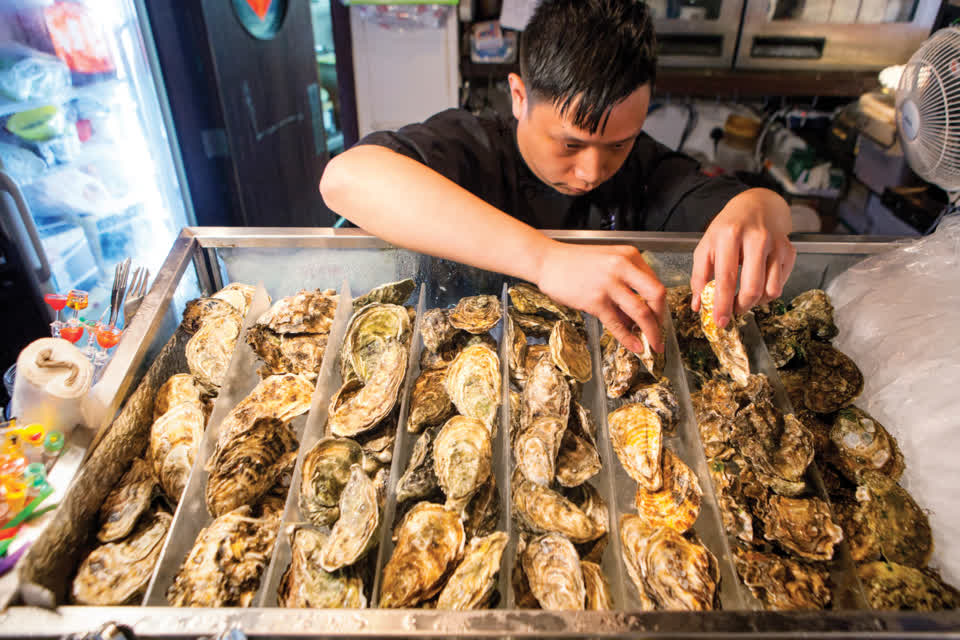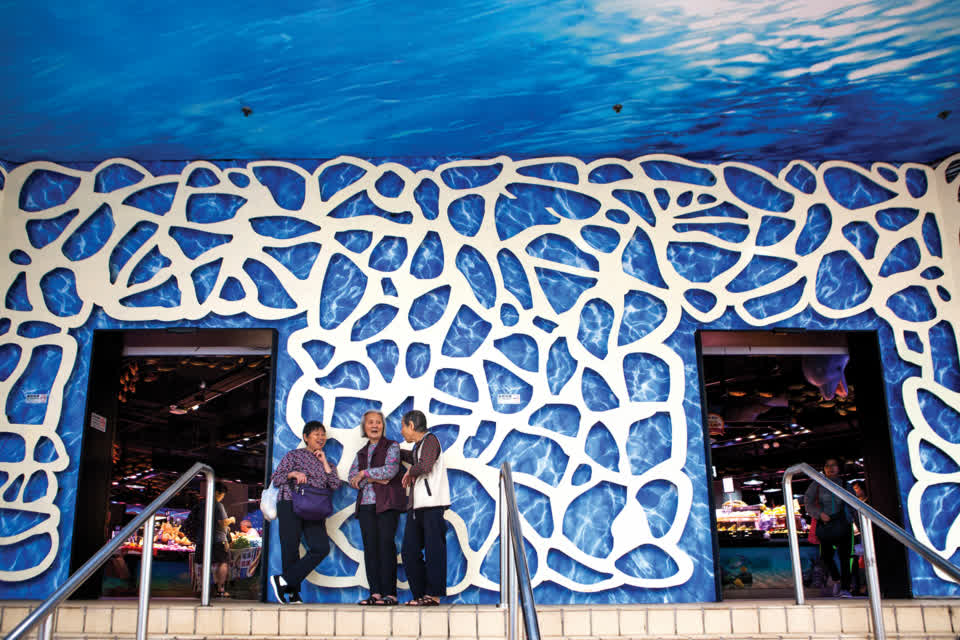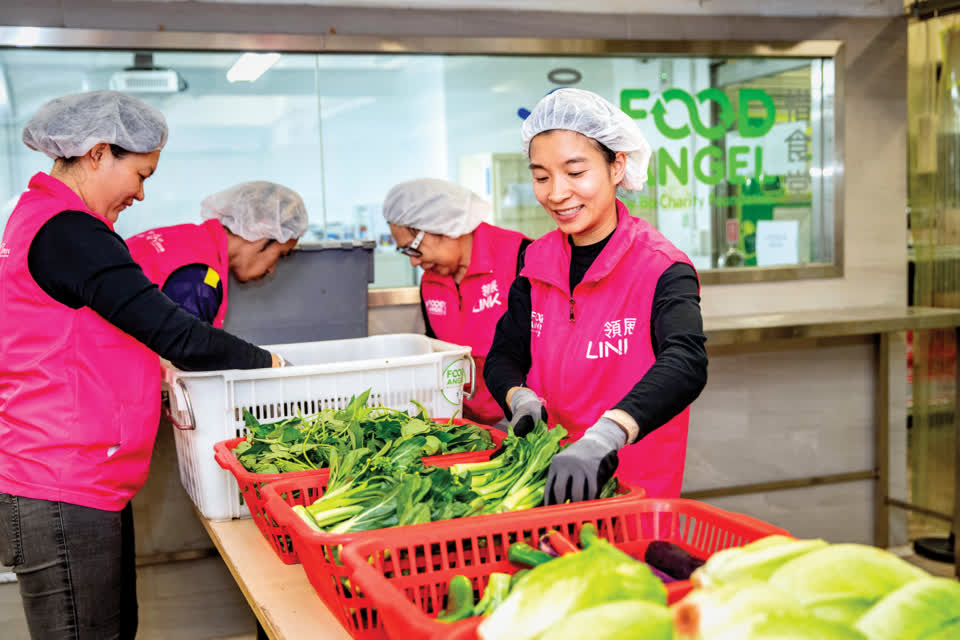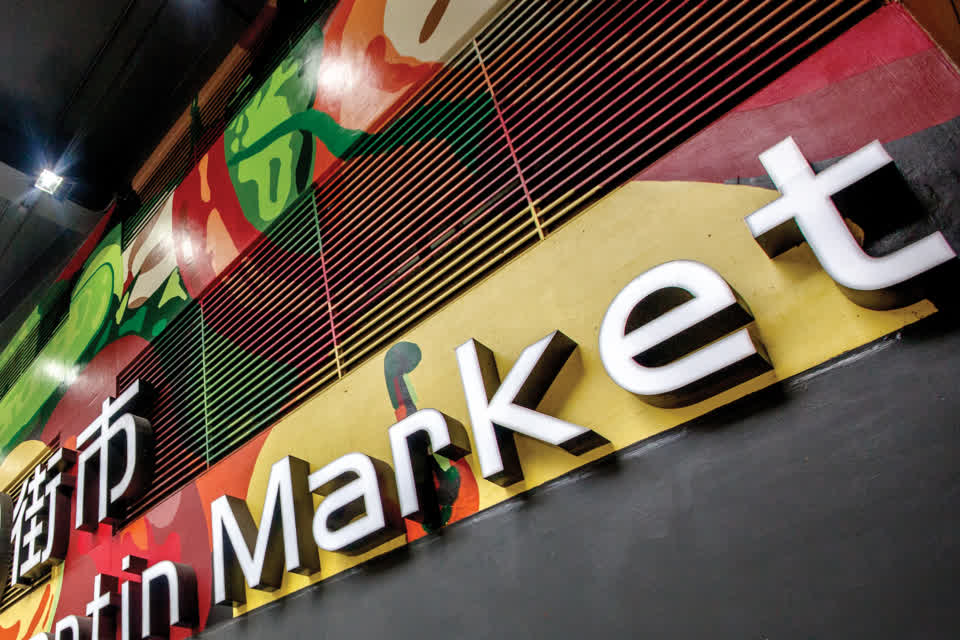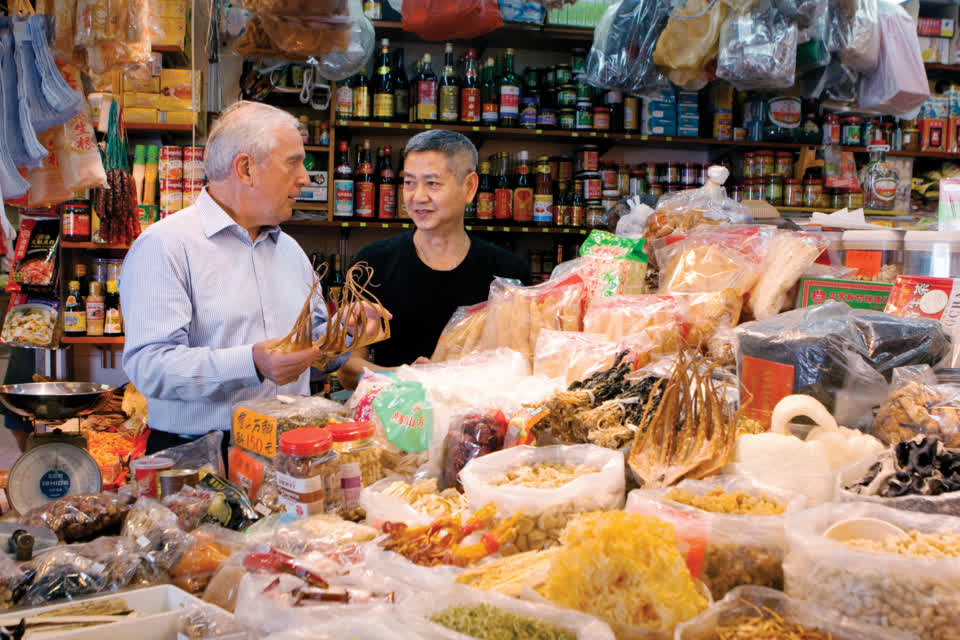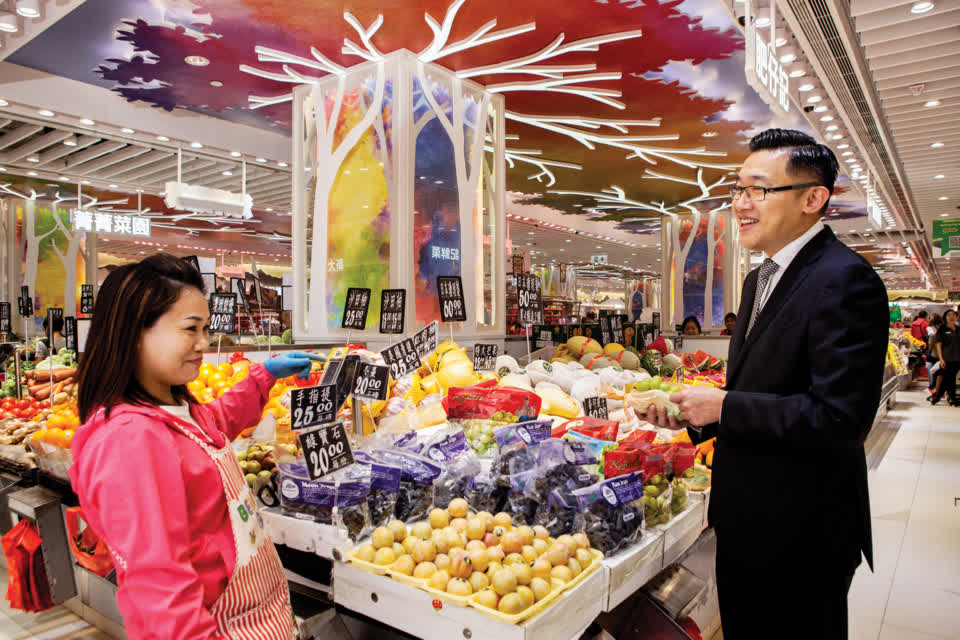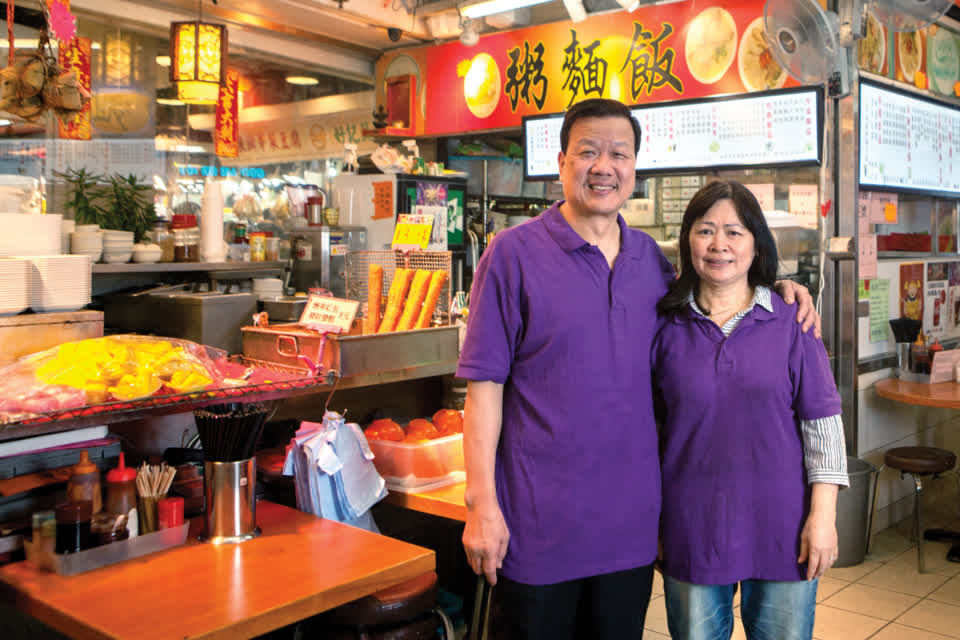“When we first started planning the renovation project, one of the things we realised was that the markets in Hong Kong were actually first designed simply as a solution to a hygiene problem,” says George Hongchoy, Link CEO. “This standard design was the answer to a public health issue that the government had dealt with 40 years ago.”
That was when market traders had been moved from their outdoor street pitches to tiled indoor market buildings. The motive then was aimed solely at cleaning things up.
“But from our modern perspective, as a shopping centre operator, we thought the markets could also be managed and designed from a retail point of view,” Hongchoy says. “Could they be turned into an attractive retail shopping experience?”
This wasn’t a simple matter of cosmetic changes. It would involve a wholesale renovation of how the markets worked, with a complete rethinking of layouts. It was really going back to basics. It also involved engaging with all the markets’ tenants – some of whom were fearful of change – and making sure that they were on board with the new direction.
HIGH-DENSITY ANSWERS
Keith Griffiths is the founder and Chairman of the Hong Kong-based architectural practice Aedas, and he is also a Non-Executive Director at Link. One of his specialities is finding ways to meet the demands of high-density urban living, and Hong Kong needs innovative solutions to these issues more than any other place in the world. He was keen to be involved in redesigning the markets and improving on what had been seen as acceptable before.
“The development of markets in Hong Kong at the moment is really interesting because we have a raft of markets that we developed over the last 50 years which are essentially concrete boxes,”
he says. “They are like chicken coops, cubicles with shutters down the front, and this is really not the way that markets traditionally operated. Markets since Greek times and Roman times have been the centre of the community. It’s where people come to meet, to chatter, to pick up the news, and yes, to buy some product. But what we had in Hong Kong was markets with concrete walls where you could just go to buy things.”
“All the old markets tended to be grid-pattern things that were easier to build, easier to clean,” Sallnow-Smith recalls. “The government’s Food and Environmental Hygiene Department liked that.”
Griffiths agrees. “Ever since the demise of the street market we’ve had just one model of market in Hong Kong, which is white-tiled ceramic-walled cubicles with a narrow aisle about six feet wide, and shutters down the front. But that’s not a market, it’s just a series of shops – tiny shops all linked up together with a right-angle grid system of walkways. It’s all wrong. It doesn’t provide the social activity that a market should provide.”
All the social interaction at the centre of Hong Kong’s housing estates wasn’t occurring in the markets, which should have been the natural place for people to meet. That was a huge opportunity lost.
“So a few years ago, we said at Link: look, we have all of these concrete markets. Why don’t we see if we can get them to be centres of the community?” Griffiths says. “There they are, sitting right in the middle of our housing estates, and yet people are meeting in the mall, or on the street, instead of in that market. But at the same time we’re going to be air-conditioning those markets and making them more pleasant places to be, and cleaning them up because more importantly, those old markets were actually not very sanitary. They had narrow aisles full of water coming off the fish and so on, and it really was quite an unpleasant experience to be in those markets, with their white tiles and rusty shutters and very high heat and humidity. So at the same time we need wider aisles, good sightlines so you can see through, better ways to lock up the goods at night. New ways of delivering goods throughout the day without making a mess or splashing water all over the place. We need new materials too. New tiling methods, new lighting methods.”
The first step was finding ways to create a sense of openness in the markets.
“Let’s get rid of those walls,” Griffiths says. “Drop those concrete walls down to about four feet high, so you can see right over them. Secondly, lift up the signage overhead so that we have a bigger field of vision. Try to create as much height as possible. That creates the clear viewing field that we need.
“Then we need to think about re-planning the stalls, because the meat and the fish stalls need plumbing. They need drainage. They do make a bit of a mess, so move them to the side walls. Put the fruit and vegetable stalls in the middle so you can see out, so you can see over all those beautiful fruits and vegetables, all those colours, those reds and yellows and greens, so you can see through to the meat and the fish on the edges.”
The next step was to widen the aisles and make them more interesting, not just cross-grids of parallel walkways. Griffiths makes the point, which becomes obvious when you think about it, that people don’t naturally walk in straight lines and turn at right angles.
“No, they flow, people like flowing as they walk past food stalls, just looking, enjoying, talking to their friends. So we should make the market humanistic, make it a lovely place to be with the new wider aisles. And keep those aisles dry and maintained; management is so important. Devise new drainage routes so we can drain water away more quickly, so we don’t end up with a slippery floor where people are afraid to walk.
“Next, design. Different types of stalls have different design approaches. So fruit and vegetable stalls can be low. You can cantilever the fruit over the edge of the stall. So what you’re seeing is just prime lots of produce.”
In Europe and America, traders often put a mirror across the back of their stalls that reflects the colourful fruit and vegetables twice. This is another method that can be used. Dry goods are a bit different; those stalls need to have walls to hang things on, but they need to be positioned so they don’t block the view of the rest of the market.
“Finally, the fish and the meat. They’re very important because here we’re dealing with things that need to be very sanitary. How do you get the drainage to work, how do you ensure cleanliness, how do you wash down? How do you lock up at night, where are you going to take that product at night? How easy is it to access the fridges? These are all things that need careful thought.”
